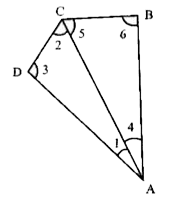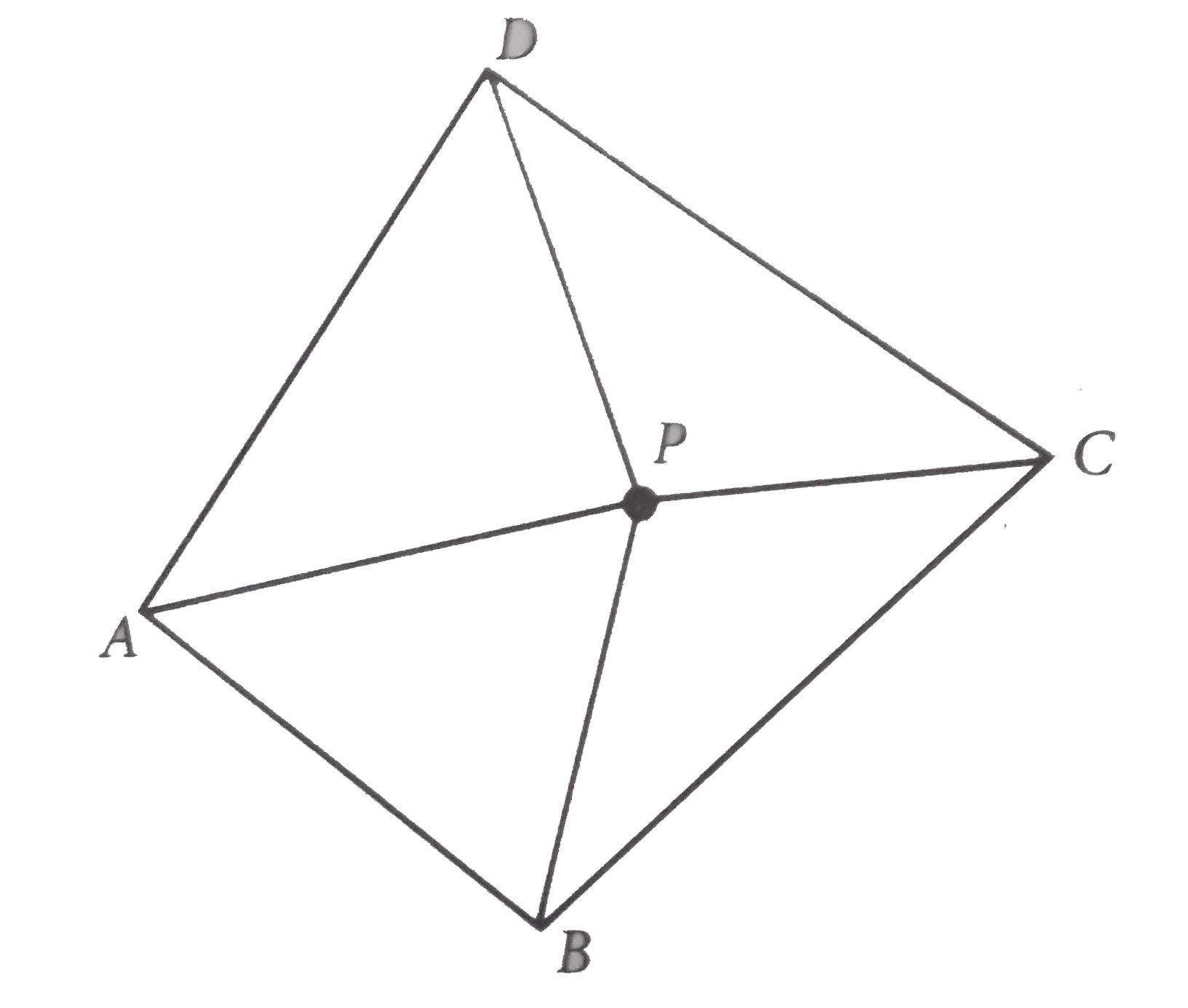Take any quadrilateral , say ABCD .Divide it into two triangles by drawing a diagonal . You get six angles 1,2,3 ,4,5 and 6 . Use the angles sum property of a triangle and argue how the sum of the measures of ∠A,∠B,∠C∠D amounts to 180∘+180∘=360∘ .
 Solution in Punjabi
Solution in Punjabi
Step by step video & image solution for Take any quadrilateral , say ABCD .Divide it into two triangles by drawing a diagonal . You get six angles 1,2,3 ,4,5 and 6 . Use the angles sum property of a triangle and argue how the sum of the measures of angleA,angleB,angleCangleD amounts to 180^(@)+180^(@)=360^(@) . by Maths experts to help you in doubts & scoring excellent marks in Class 8 exams.
Updated on:21/07/2023Topper's Solved these Questions
- UNDERSTANDING QUADRILATERALS BOOK - NAND LAL PUBLICATIONCHAPTER - UNDERSTANDING QUADRILATERALS EXERCISE - THINK , DISCUSS AND WRITE
4 Videos
- UNDERSTANDING QUADRILATERALS BOOK - NAND LAL PUBLICATIONCHAPTER - UNDERSTANDING QUADRILATERALS EXERCISE - Do This
1 Videos
- SQUARES AND SQUARE ROOTS BOOK - NAND LAL PUBLICATIONCHAPTER - SQUARES AND SQUARE ROOTS EXERCISE - Sample Paper For Practice
12 Videos
- VISUALISING SOLID SHAPESBOOK - NAND LAL PUBLICATIONCHAPTER - VISUALISING SOLID SHAPESEXERCISE - THINK, DISCUSS AND WRITE
1 Videos
Similar Questions
a,b,c and d are the angle of any quadrilater .if ∠a=45,∠b=60,∠c=100. Find ∠d
View SolutionTake identical cut outs of congruent triangles of sides 3 cm ,4cm , 5cm Arrange them as shown .

You get a trapezium (check if) which are the parallel sides here ?
should the non -parallel sides be equal ?
You can get two more trapeziums using the same set of triangles. Find them out and discuss their shapes.
View SolutionIs 4, 6, 8 is a pythagorean triplet?
View SolutionWhat happen to F, V and E. If some parts are sliced off from a solid? (To start with you may take a Plasticine cube, cut a corner off and investigate).
View Solutionकिसी चक्रीय चतुर्भुज ABCD में ∠A+∠B+∠C+∠D=?
View Solutionयदि किसी चतुर्भुजABCD में ∠A+∠C=2(∠B+∠D) हो तथा ∠A=140∘, ∠D=60, हो तो ∠B=
View SolutionIf one angle of a triangle is equal to the sum of the other two,show that the traingle is right angled.
Hint.∠A=∠B+∠C⇒∠A+∠B+∠C+=180∘
View SolutionAngle sum for a polygon
Draw any quadrilateral ABCD.
Mark a point P in its interior.
Join the segments PA, PB, PC and PD
You have 4 triangles now.
How much is the sum of all the angles of the 4 triangles ?
How much is the sum of the angles at P ?
Can you now find the 'angle sum' of the quadrilateral ABCD ?
Can you extend this idea to any polygon ?

View SolutionIn a right angled triangle ∠Band∠A are acute angles. If ∠A−∠B=k, where A and B are integers, then how many integer values can 'k' take?
View SolutionOne angle of a triangle is greater than the sum of the other two. What can you say about the measures of this angle? What type of a triangle is this?
View SolutionTake any quadrilateral, say ABCD , Divide it into two triangles, by drawing a diagonal. You get six angles 1,2,3,4,5 and 6. Use the angle sum property of a triangle and argue how the sum of the measures of and amount to 180∘+180∘=360∘.

View SolutionIf one angle of a triangle is equal to the sum of the other two,
show that the traingle is right angled.
Hint. ∠A=∠B+∠C⇒∠A+∠B+∠C+=180∘
View SolutionFind the sum of the angles of a quadrilateral, if the adjacent angles of the quadrilateral ABCD, angleA And angleB The bisectors of the angle intersect at the point P. Prove that 2angleAPB= angleB + angleD
View SolutionIn a Quadrilateral ABCD, angleA +angleB = 200^@ then angleC +angleD = _____
View SolutionConsider a quadrilateral, ABCD. (Attached Figure 3.7). Draw a diagonal and divide it into two triangles. You get six angles 1,2,3,4,5 and 6. Use the angle-related property of the triangle and argue how /_A, /_B, /_C And /_D Of measurements 180^@ + 180^@=360^@ The sum is formed.
View Solution
